The 5 Knots Every Sailor Needs to Know and Why
July 1st, 2020 by team

by B.J. Porter (Contributing Editor)
Now and then, I open the knot book to look up something for a specific application. I’ve come to it with questions like “what’s the best way to tie this slippery piece of uncovered Spectra to this anchor chain so it never slips” or some other specialized knot. But for most applications on a boat, a handful of knots will do the job for you. Learn them, and you’ll rarely need a knot book.
Bowline
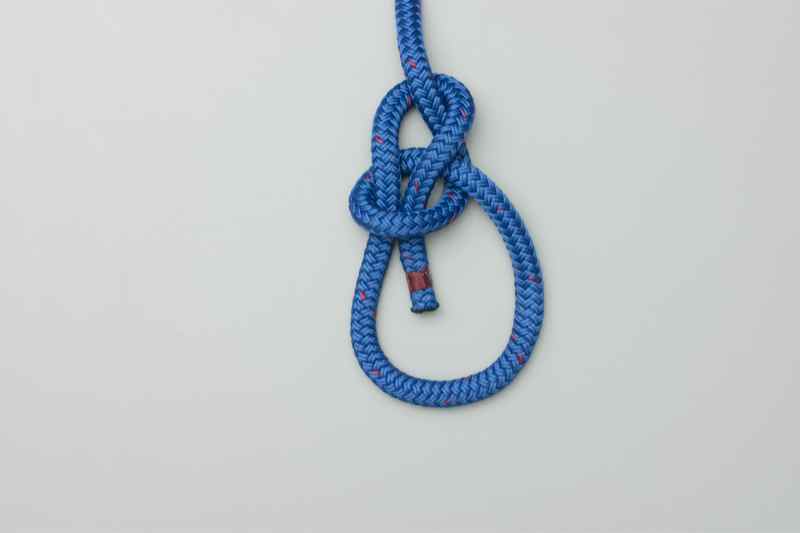
The bowline is the ubiquitous knot for putting a loop in something that needs a line to it. You can use a bowline for everything from connecting your dinghy painter to the bow of your boat to putting the sheets on your headsail. In the last few days I tied dozens of them (and square knots) as we dressed ship for a celebration, connecting strings of flags with grommet holes and no lines. We tie our dinghy to the stern with one. Hardly a day goes by without a bowline in it.
The bowline is easy to tie and is non-binding and easy to break and remove. It’s not a permanent loop. Two cautions though – the knot structure can reduce the working load of high modulus lines, and it does not hold well with more slippery lines.
I use this knot enough that I learned how to tie it without looking. If you can tie it behind your back with your eyes closed, you should be able to tie it in the dark on a pitching deck with your arms wrapped around the mast.
Stopper Knot
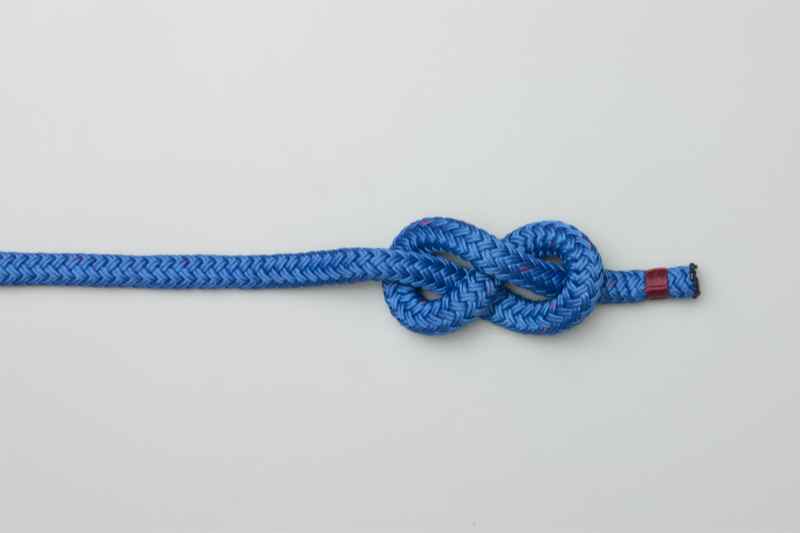
A simple stopper knot can save you a lot of headaches if a line pops out of a self-tailer or slips from your hands. The most common stopper we’ve seen is the Figure 8 Knot, but we’re also fond of another knot, which I learned at J/World many years ago. It’s similar to a Double Overhand Stopper.
A stopper knot puts to put a non-binding lump of line at the bitter end to stop your sheet or halyard from pulling through a block, clutch, or hole in the mast and get lost. It keeps the lines where they belong and gives you a chance to recover from mistakes and mishaps.
There are times you don’t want a stopper, such as on a spinnaker sheet while racing, in case you need to blow it quickly. But most sheets, lines and halyards should have a stopper on the end.
Clove Hitch
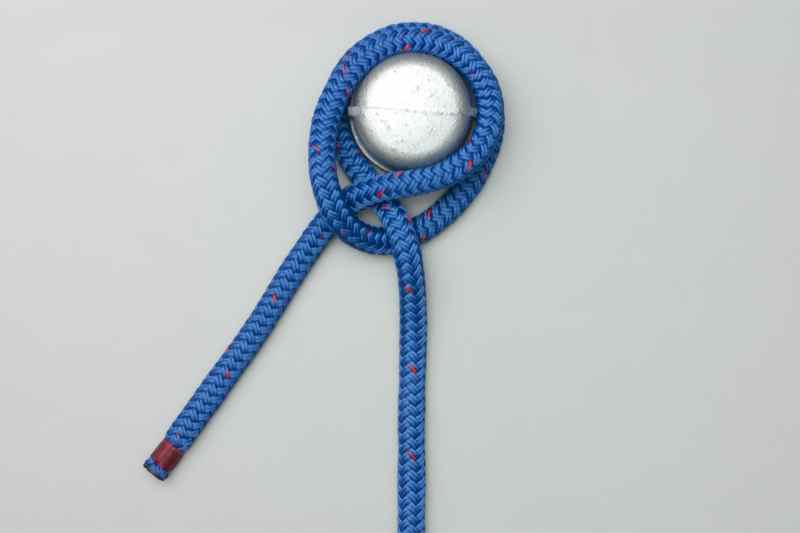
The clove hitch is a quick way to get a line around a pole or bar. We’ve used them to tie the boat to pilings, tie the dinghy off at dinghy docks, and to put lines on a variety of antennas and poles we’ve had to hoist over the years.
It’s not the strongest knot, but it’s quick to tie and holds well. With practice, it can be thrown over pilings and posts using two half hitches. There are several ways to tie the clove hitch, the exact technique you use depends on whether you’re putting it over a piling, attaching it in the middle of a twenty-foot bar, or putting it on a pig stick and where in the line you are tying it.
Cleat Hitch
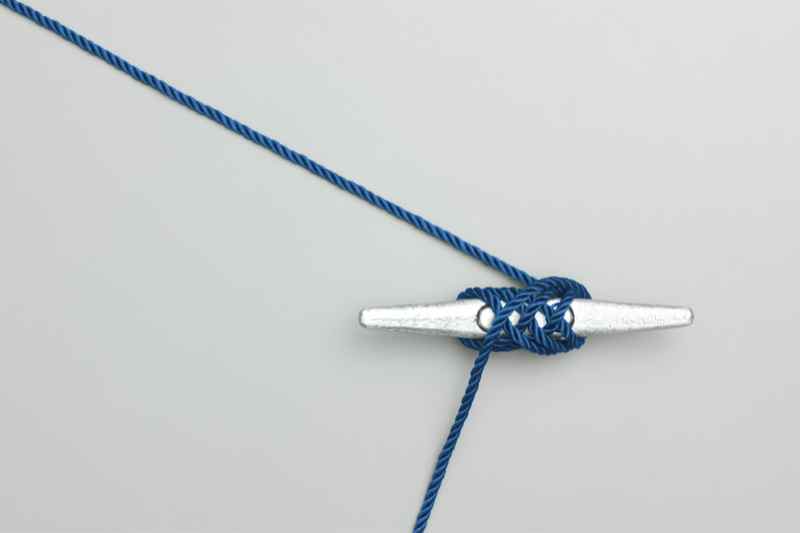
Tying a boat to a cleat should be a simple procedure, yet the cleat hitch may be the most abused knot in the marina. There’s no need to entomb a cleat with rope like you’re mummifying it for the afterlife. A few quick loops and a belay can lock the boat tight and make getting off just as easy. Our preference is to use the version with a belay at the end which is slightly different and a little more secure.
Square Knot (or Reef Knot)
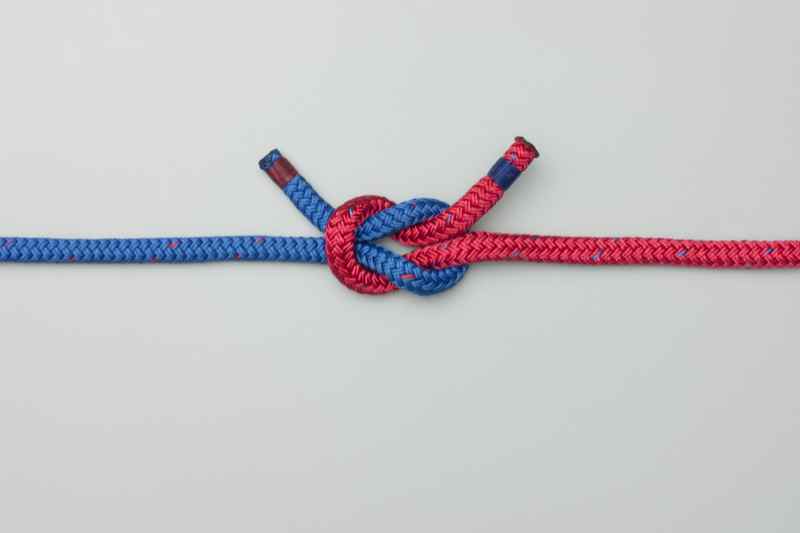
This is about the most basic knot, and one of the most useful. The square knot is for connecting the bitter end of two lines together and is quick to tie and easy to remove. One common use is tying reef lines around a slab reefed sail, hence the second name for it.
For anything you need to through a quick loop around and tie it in place, the square knot is a good choice. You can also add another hitch to increase the strength of the knot.
The disadvantage of the square knot is that it is hard to tighten down on what you are holding. If you need to tie something down so it absolutely doesn’t wiggle, then tension is important and the square not may not be the best choice. But if tension isn’t critical, it’s a great, simple knot to put in and take out when you’re done.
- Posted in Blog, Boat Care, Boating Tips, Cruising, Fishing, iNavX, iNavX: How To, Navigation, Sailing, Sailing Tips
- 2 Comments


August 08, 2020 at 4:31 am, Kat said:
My stopper knot is about 12 – 18 inches from the end of the line! It gives me something to grab if I need to pull it back in quickly! Thanks
June 15, 2021 at 5:21 pm, Martyn Adams said:
Very good. I would add 1 more. The Sheet bend, used to join two lines with unequal diameter or composition.